Knights and Knights of the Rose War era (part 3)
On the Bosworth field you can see a lot of such and similar to him monuments, noting who was standing where in that decisive battle, which changed the fate of England for the second time.
In this article we will look at another reconstruction of the armor of the Rose War, made on the basis of the extant set of Milan armor, which is on display at the Scott Collection in Glasgow. The “barbute” helmet is adapted to them in the museum, however, the artist Graham Turner considered that it should be replaced with “arme”. Apparently, this armor is approximately 1450 of the year, but could be used much later.
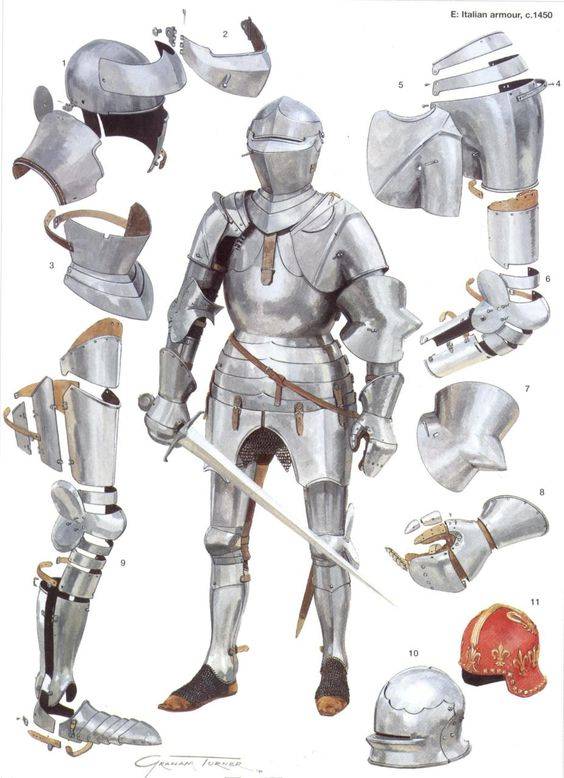
"Knight of Glasgow" - a reconstruction of Graham Turner.
These armor also have two plates, on the chest and on the back connected by a leather belt. The chest and back plates are also connected by a hinge on the knight’s left side, and strapped on the right side, i.e., the armor is “tricky”, since the leather parts are in the most protected position from the enemy’s attacks. That is, again, we see that the cuirass has, firstly, in some places a double metal layer, and secondly, the necessary degree of mobility. Below it is a mail "skirt", which does not hinder movement, but protects the genitals and the "skirt" of forged metal strips, arranged according to the type of folding tourist cup. That is, when the knight mounted his horse, the stripes of the skirt went into each other and rose without disturbing him from sitting in the saddle. For walking, both skirts could be replaced with pantons of chain mail, put on under the Shossas, or stockings trousers that fit the legs.
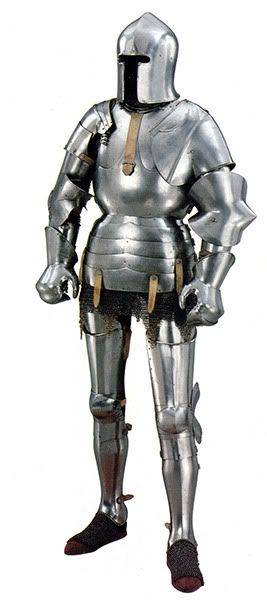
"Knight of Glasgow" - the original.
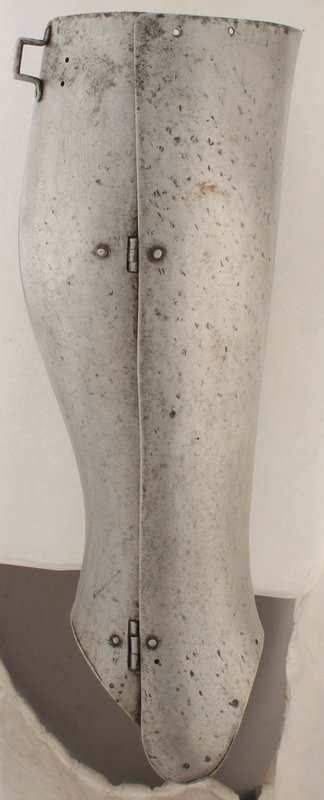
"Greaves" with fastening loops.
Italian armor is easy to distinguish from all others for a number of signs. This is their obvious "plumpness", and the presence of mail "sabaton", common in Italy. The question arises, what about shoes? But it was not there, that is, it was not in our understanding. For a knight, the sabatons of chain mail on leather podboy or entirely chain mail were just the best shoes.
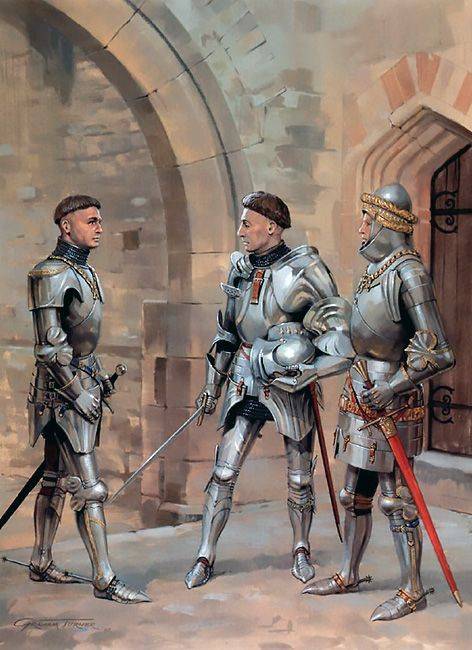
John Cressi, Richard Beauchamp, Earl of Warwick, William Philip, Lord Baldorf - in the armor of the Rose War era. Fig. Graham turner
Consider now the drawing of Graham Turner, depicting the "knight of Glasgow" in Italian lats about 1450, in more detail.
1. Helmet-"Arma" disassembled. The dome of the helmet had a leather lining, and the helmet itself was designed so that it could be easily disassembled into parts, which made it easy to replace or repair parts damaged in battle.
2. The visor could also be easily removed. To do this, it was necessary to remove the locking pins on the sides.
3. A chin-bevor could be worn over a visor, and it was held in place with a strap fastened at the back of the head. That is, "spaced armor" is by no means the prerogative of our modern tanks and she appeared long before the twentieth century!
4. Both the shoulder plates of the “poldron” and the plates of the plate shoulders - all these parts had protruding ribs that diverted the tip of the spear or sword to the sides. The plates were connected with rivets and on belts.
5. A feature of the Italian, Milanese, armor was the left shoulder pad, which was much larger than the right one. Well, if you look at the Milanese armor from the back, then many shoulder pads are made to overlap each other.
6. As you can see, the armor for the arm was very well thought out. All of his metal strips were held on by leather straps and rivets in such a way that they overlapped one another without revealing the body anywhere.
7. Large guard "vanbrasa", or protection of the hand - a typical Italian form, judging by the size. And it was fixed on the left elbow pad very simply: it had a hole for a hairpin. The stud had a hole for a pin-lock on the chain.
8. The gauntlets were actually just leather gloves with metal plates sewn onto them. Moreover, an additional strip of skin was sewn onto each individual finger, and steel plates, or scales, overlapping each other, were already attached to it with rivets. The left gauntlet often differed from the right gauntlet in that it had one large plate covering all fingers, while the right gauntlet, since it needed more mobility to hold weapons, had several plates.
9. “Kuis”, or gaiter, again at the top was sheathed in leather with holes, through which the real “boot laces” were passed in order to tie them to the holes on the hem of the doublet - the caftan- “podlatnik”. The knee pad in Italian fashion had large side wings. The "mane" - or a greave, or a greave - consisted of two parts on two loops, tightened on the leg with straps with buckles on the inside of the lower leg.
10. With Italian armor, it was fashionable to wear the Italian "salad".
11. The Italians have always been great fashionistas, they wore overlaid plates of embossed leather, often gilded, over chain mail armor, and very often they covered helmets with fabric, this is how this “salad”, covered with velvet and decorated with figures of gilded copper (c. 1480 ). Corduroy was used for cheaper helmets.
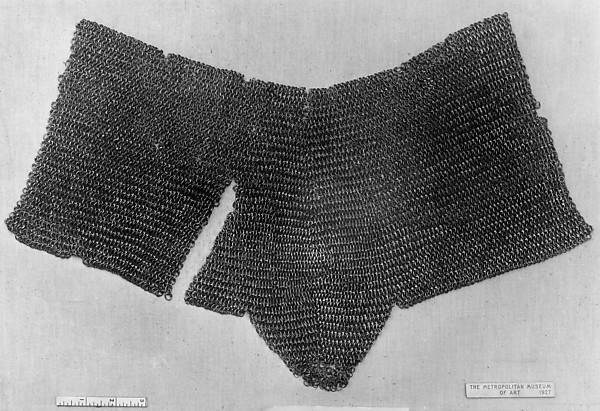
Visitors to the VO website repeatedly asked questions about which knights wore “underwear”. And not just underwear. Here, no one has come up with special frills, but a protective one, with which you can protect your genitals. And I must say that in the collection of the Metropolitan Museum in New York these particular “armor” turned out to be quite a lot. Here, for example, kolchuzhnye cowards, however, the XVI century from Germany. Weight 538.6
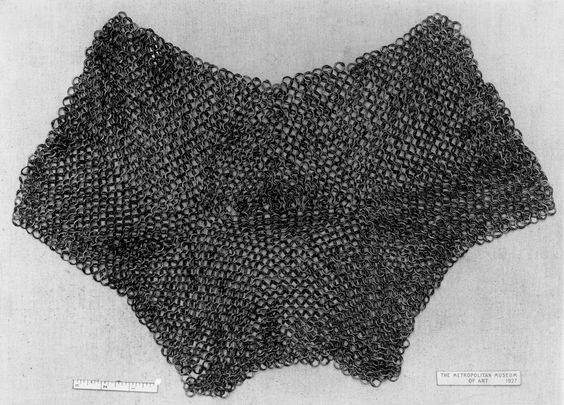
These are even heavier: weight 1.16 kg.
The important question is: how many soldiers dressed in metal armor were at the disposal of the commanders of the war era of the Scarlet and White Rose? In the Black Book of King Edward IV, there is evidence of how many squires had been in possession of the nobility of Britain in his time, which, if necessary, they could "call up for a gun." The king is 600, the duke is 240, the marquis is 200, the count is 140, the viscount is 80, the baron is 40 and the simple knight is 16 man. And it was precisely during the Rose War that the number of all troops mobilized during short campaigns reached 50000 people. But, of course, not everyone flaunted in full armor. For example, in many castles, the garrisons were staffed on the principle of three archers per gendarme.
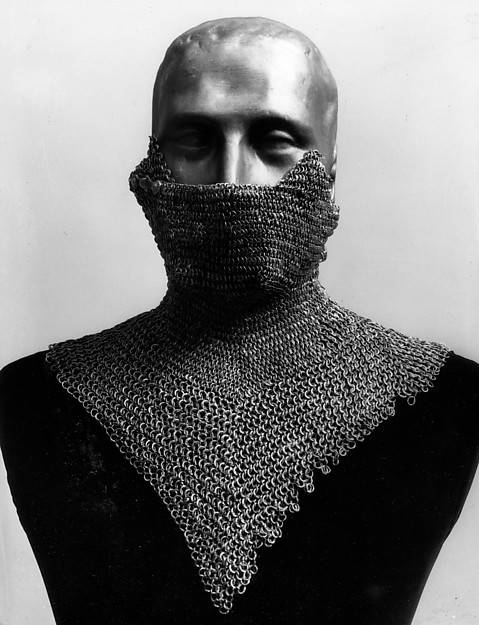
Chainmail continued to be used to protect the neck and lower face. Germany, XV century. 1275.73 weight
The recruitment of troops carried out the "captains", gaining soldiers under the contract. The contract was called "indentura" (or something jagged). Why is that? But the fact is that a fully drafted contract with a specified number of participants and the amount of payment was cut in a zigzag or wavy line and one part remained with the captain, and the other was sent to the royal treasurer for payment. In case of any disputes, it was enough to fold these papers along the cutting line ...
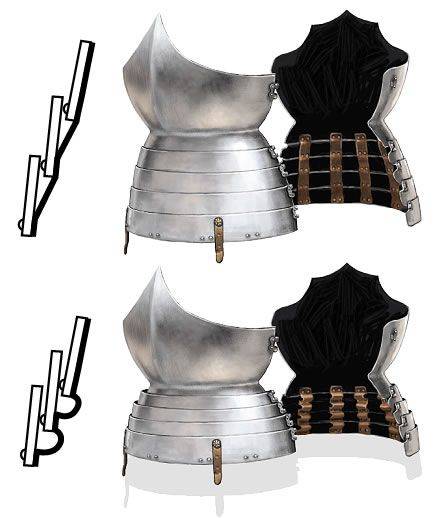
An important part of the armor of the Rose War was the breastplate. Most often, it was arranged in such a way as shown in this figure. "Skirt" when landing in the saddle evolved.
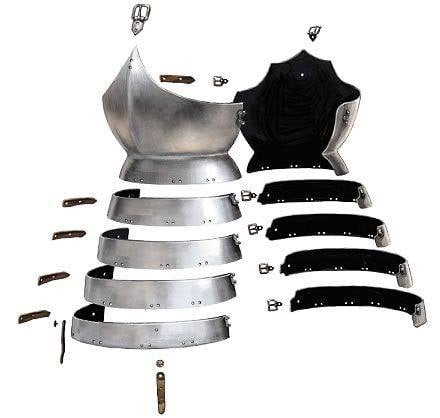
Device "nabryushnik (bottom of the cuirass) and" skirts. "
Treaties were various. For example, in the indenture from 20 of September 1468 of the year, concluded between Lord Scales and Squire John Norbury, it was said about one gendarme and 118 archers hired for 91 day. Under King Edward VI, a knight hired by such a detachment received two shillings a day, a squire one, and an archer even less.
Large detachments of "recruits", that is, militias from peasants and townspeople called up for service, according to documents of 1468 of the year, were "companies" of 1000 people in each, then in turn they were divided into groups of 100 and 20 people. The problem was only with the fact that sometimes the Yorkies and Lancaster were called upon by the same militia. For disobedience, they were threatened with death and ... it also happened that the militia went to serve not their immediate overlord, who, for example, was far away. And the one that was ... closer!
[Center]
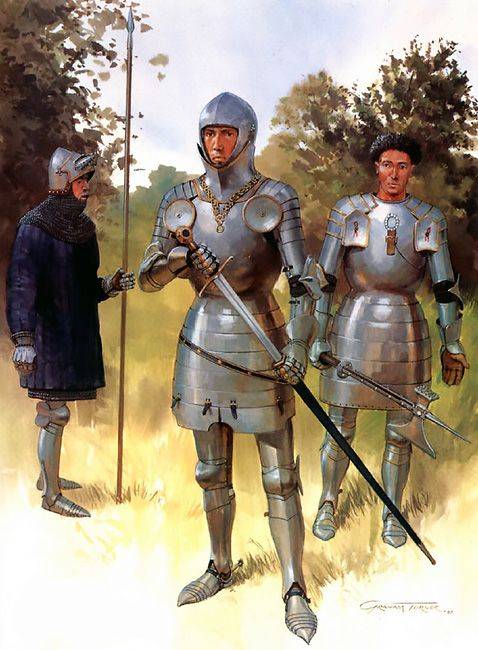
Another work by Graham Turner, depicting the knights of the Rose War era. As you can see, their white armor was still very simple and functional.
How perfect and numerous were the weapons of that time? This may be evidenced by a document such as the inventory of Kaister’s castle from 1461, which states that the castle had four breech-loading cannons with eight spare chambers, two guns fired 7-inch (178 mm) stone cores, and two - 5 -inch (127 mm). There was one serpentine with three 10 inches (254 mm) and one 7 inches (178 mm) caliber. Both shot the stone cores. Three guns had a caliber 12 inches (305 mm) and two more short ship guns with six camors. Two small serpentines and four guns were intended for shooting with lead bullets. And all this arsenal was provided with a stock of gunpowder and shells. In addition, the list included seven units of handguns, and another 24 shield from elm, two from baleen plates, eight sets of “white” armor of an obsolete type, ten pairs of worn torso armor, 14 worn “Jacques”, i.e. fabric armor with horny plates sewn onto it, ten bascinet helmets, 24 salad, six plate collars, 16 lead hammers and nine checks. In addition, the list included galvanized helmets, four large steel crossbows, two - with whalebone bows, two - with yew bows, two “gobergeon” (short mail armor) and even a barrel for storing them. Moreover, all this is an arsenal of just one single castle, and far from the most important and large!
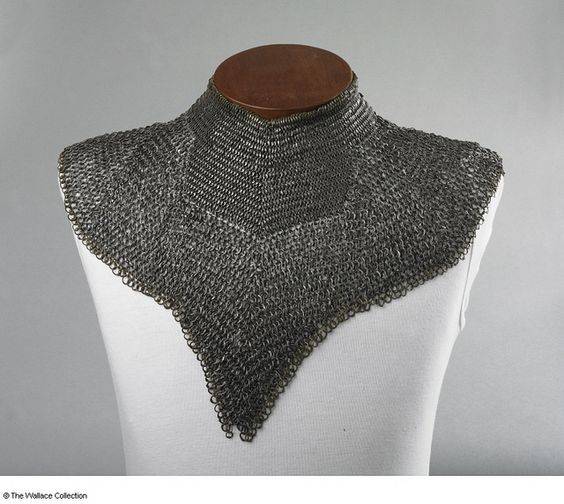
Chain collar end of the XV century. Overall length 73.7 cm. Weight 0.85 kg. (Wallace Collection, England)
By the way, one should pay attention to the large stock of interchangeable cameras for the guns, which made it possible to maintain a high rate of fire, since to load the gun it was enough to remove the interchangeable chamber and immediately insert a new one. The trunks for cooling all the time poured water, and since the chamber was abundant, they had time to cool down after the shot.
To be continued ...
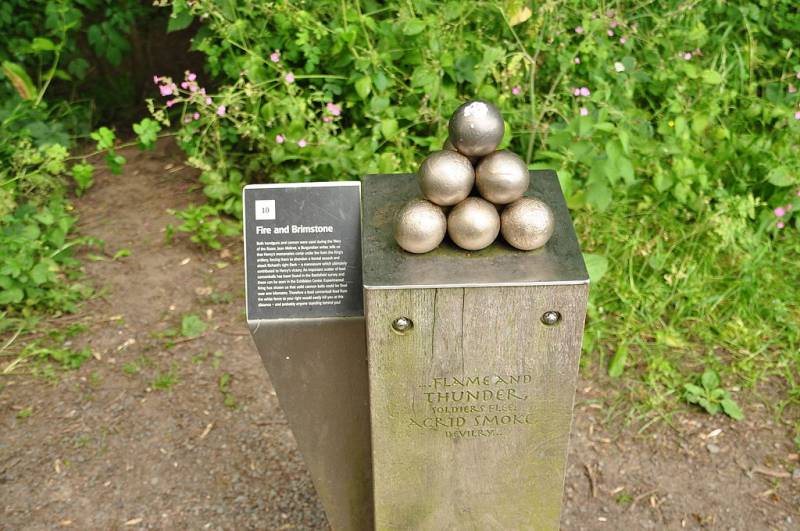
Information